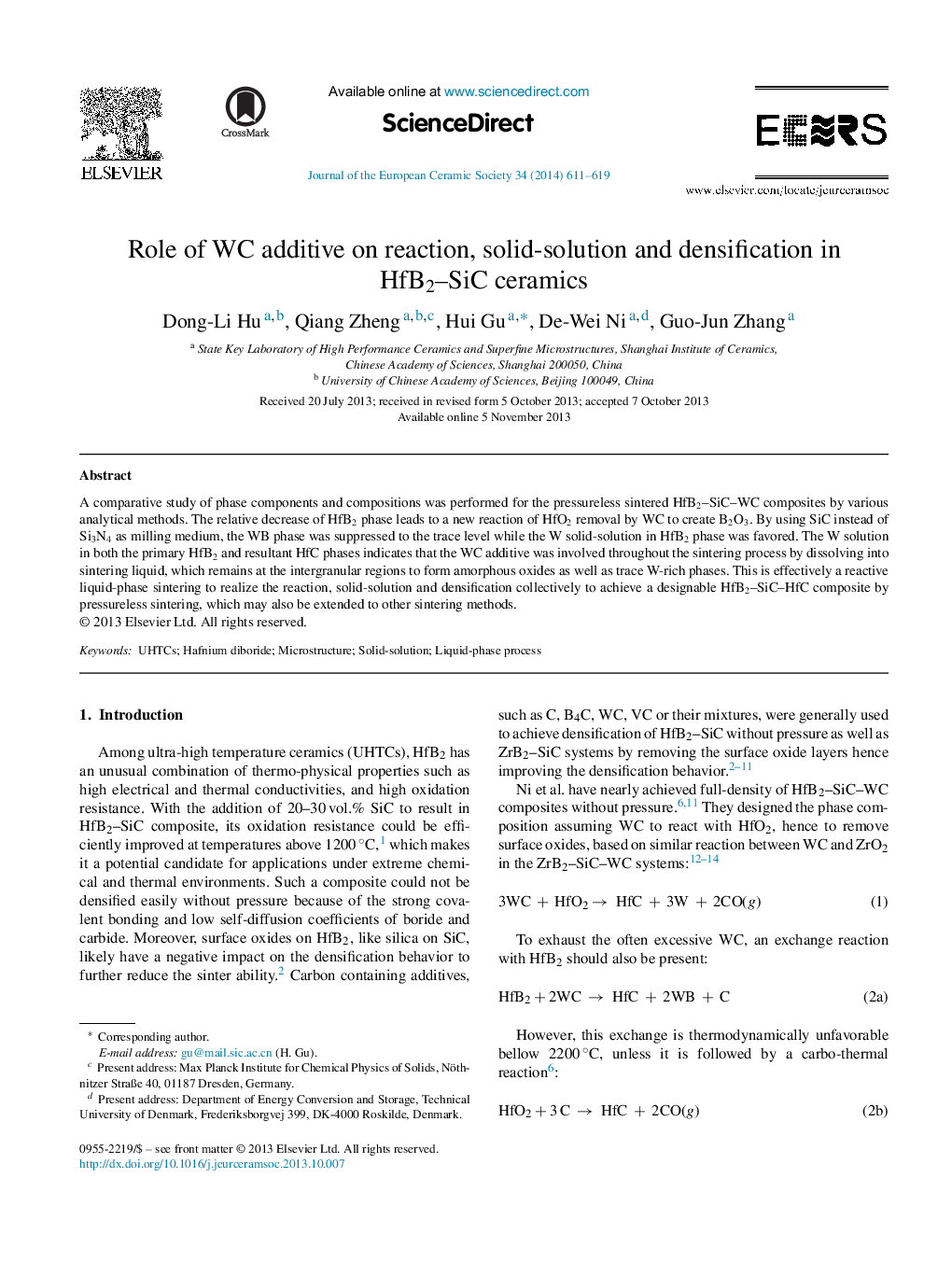| Article ID | Journal | Published Year | Pages | File Type |
|---|---|---|---|---|
| 10629522 | Journal of the European Ceramic Society | 2014 | 9 Pages |
Abstract
A comparative study of phase components and compositions was performed for the pressureless sintered HfB2-SiC-WC composites by various analytical methods. The relative decrease of HfB2 phase leads to a new reaction of HfO2 removal by WC to create B2O3. By using SiC instead of Si3N4 as milling medium, the WB phase was suppressed to the trace level while the W solid-solution in HfB2 phase was favored. The W solution in both the primary HfB2 and resultant HfC phases indicates that the WC additive was involved throughout the sintering process by dissolving into sintering liquid, which remains at the intergranular regions to form amorphous oxides as well as trace W-rich phases. This is effectively a reactive liquid-phase sintering to realize the reaction, solid-solution and densification collectively to achieve a designable HfB2-SiC-HfC composite by pressureless sintering, which may also be extended to other sintering methods.
Related Topics
Physical Sciences and Engineering
Materials Science
Ceramics and Composites
Authors
Dong-Li Hu, Qiang Zheng, Hui Gu, De-Wei Ni, Guo-Jun Zhang,
